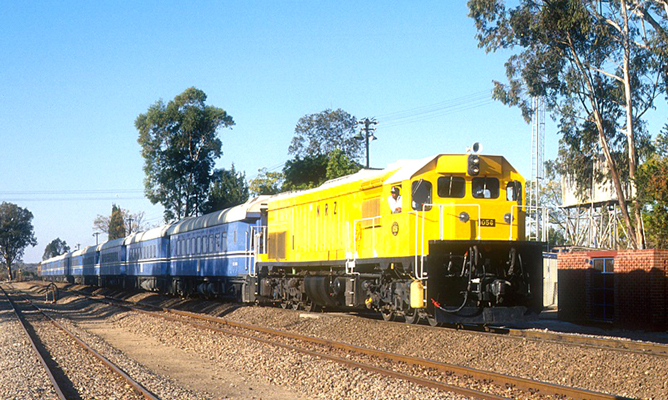
THE National Railways of Zimbabwe (NRZ) says it is targeting several new mines that have been established in Zimbabwe to increase freight volumes while government scouts for fresh capital.
BY MTHANDAZO NYONI
Efforts to revive the rail entity through the US$400 million recapitalisation deal with the Diaspora Infrastructure Development Group failed two years ago, but government has said it will be injecting fresh funding into the firm.
NRZ spokesperson Nyasha Maravanyika told Standardbusiness in an interview that while they were still waiting for fresh capital, the parastatal was looking at many ways of improving freight volumes.
“There are so many mines that are opening up. If you go to the coal fields, we no longer have Hwange Colliery as the sole player. We now have so many players,” Maravanyika said.
“So we want to quickly come into the frame by ensuring that we put in place small sidings at those small mines so that we pick a lot of tonnes from those areas. We can utilise that bite-size approach or pit-to-pot approach where we quickly make sure that we service these small mines and small developments that are happening within our diverse Zimbabwean sector in terms of different industries. Right now we are looking at Zimasco and Mutorashanga, that’s one example. We are also looking at the coal fields as well as PPC,” he said.
The NRZ developed a siding at the PPC Zimbabwe Harare plant.
“This is an approach that we are saying we should do, but all the same this approach needs to be supported by a full-throttle capacity. In as much as we do the bite-size-approach, it needs to be supported by the traction power, which are the locomotives that we want. Bite-size approach brings progression into what we want to do, but the long-term is recapitalisation,” he said.
- Chamisa under fire over US$120K donation
- Mavhunga puts DeMbare into Chibuku quarterfinals
- Pension funds bet on Cabora Bassa oilfields
- Councils defy govt fire tender directive
Keep Reading
Maravanyika said the NRZ had not abandoned its recapitalisation plan.
“We are still looking at it and our team is working on the recapitalisation programme. Because the idea for us is to get to a point where we say we are breaking even and we can break even easily if we have the capacity and we sort out our track. Our capacity currently is between 40 and 60% because it’s a case of us trying to make sure that we at least bring in some revenue.
“You find that in 1992 when we last bought new locomotives, all that was government-to-government agreements. In 1997 when we got coaches, all that was government-to-government agreement. We are saying the government can still play its role as the shareholder; it can still support NRZ using government-to-government agreements,” he said.
Turning to performance, Maravanyika said at the end of October, the NRZ had moved a total of 2,5 million tonnes against a target of 2,9 million.
Last year NZR moved about 2,8 million tonnes.
“We wanted to eclipse the 2,8 million. In terms of what we have sourced so far, as of October we had sourced 2,5 million tonnes, which means there isn’t much difference. It’s around 300 000 tonnes that we are lacking in terms of what we sourced, but in terms of the target we are looking at 700 000 tonnes short,” he said.
“We expect to notch it over to probably 2,5 million. That’s what now we are targeting considering what we have faced. Whilst the business is there, still the issues of capacity are affecting NRZ. We don’t have enough locomotives. As things stand, we might not actually eclipse the target that we did last year or even reach our target that we set this year,” he said.
Currently, NRZ has about 40 locomotives but some of them are not functional. It needs 41 locomotives and 300 wagons.
Maravanyika said spares were expensive and the issue of sanctions had also affected them as they source some of their spare parts from Europe.
“We are in dire need of locomotives and it is our appeal to the government as the shareholder to ensure that NRZ is supported with locomotives, supported with wagons. Right now we have cases where there is a lot of business, sometimes our wagons, the rate of turnover, is very slow,” he said.
The organisation is also working on a metro-system to service the urban population.
At its peak in the 1990s, the rail entity moved 14,4 million tonnes against an installed capacity of 18 million tonnes annually.











